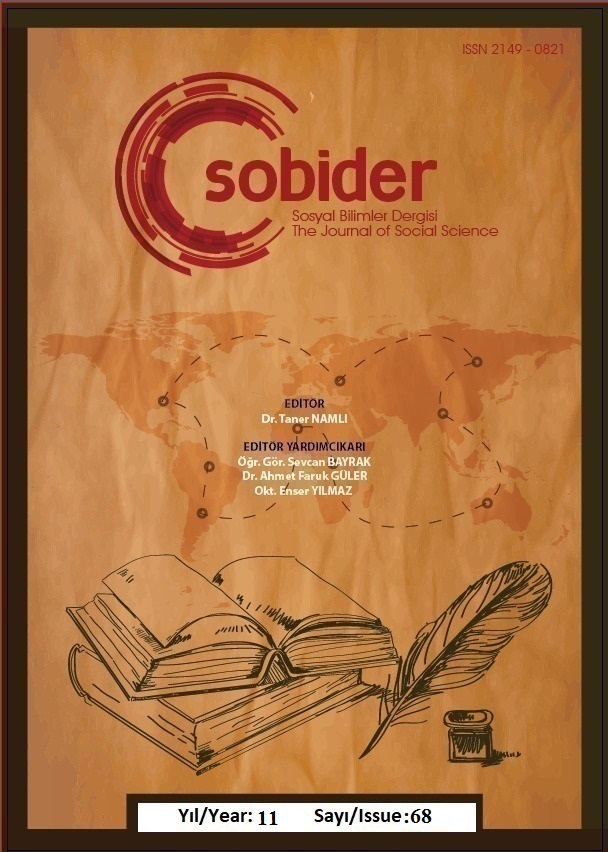Author :
Abstract
Ölümün ve bitişin varlığında gelen kopma, öznenin benliğini sorgulayan ve acı çekmesini perçinleyen asli unsur haline gelir. Ölüm, söylenildiğinde kişiden kişiye değişmeyen, herkese aynı karanlık duyguları yansıtan bir olgudur. Siyahın kuşatıcısı olduğu karanlık; yasın kök saldığı, varlığını anlamlandırdığı yerdir. Giden kişinin geri gelmemesi, kişide bıraktığı yalnızlık duygusuyla baş edemeyen birey; kendi iç karanlığına döner. Bu dönüşle birlikte acı, topyekün bir şekilde karşısına çıkar. Bu acıyı telkinleyen eylem ise yastır. Yas, acıların dinginleşme evresidir. Bireyin içindeki karanlığını, siyahını grileştirmeye çalışır. Bir alışma sürecini içerir. Yas, sadece ölenin arkasından tutulmaz. Çok sevilen, değer verilen bir nesnesinin dahi ardından tutulacağı gibi eşikte kalmış duygularında yası tutulur. Bundan ötürü yas tutma eylemi, belli kalıplarda aktarılmamalıdır. Nazım Hikmet’in yası hiç bitmemiş, içinde bir köşede daima var olmuştur. Onu sakinleştiren, ihya eden bu eylem; uzakları yakın edip şairi telkin eder. Ruhen ve bedenen sevilenden ayrılık; bireyi yıpratır, değiştirir, dönüştürür. Bu dönüşüm sonrası Nazım’dan geriye kalan siyahın içindeki hüznü ve yalnızlığıdır.
Keywords
Abstract
The rupture that comes with the existence of death and ending has become the essential element that questions the subject's self and reinforces his suffering. Death is a phenomenon that does not change from person to person and reflects the same dark feelings to everyone. The darkness encompassed by black is the place where mourning takes root and gives meaning to its existence. The individual, who cannot cope with the feeling of loneliness that the person who left does not come back, returns to his own inner darkness. With this return, pain confronts him completely. The action that suggests this pain is mourning. Mourning is the calming phase of pain. It tries to turn the darkness and black inside the individual into grey. It involves an adjustment period. Mourning is not only held for the deceased. Even a much-loved and valued object is mourned in its liminal emotions, just as it would be held back. Therefore, it is necessary not to limit the act of mourning. Nazım Hikmet's grief has never ended, it has always existed in a corner inside him. This action calms and revitalizes him; It brings the distant ones closer and inspires the poet. Separation from the loved one, both spiritually and physically; It wears out, changes and transforms the individual. What remains of Nazım after this transformation is his sadness and loneliness.





